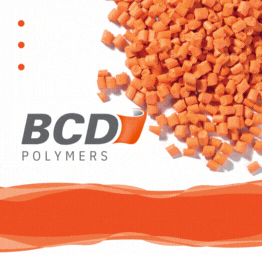PVC-free IV bags
Various preparations are available for infusion therapy, whereby a distinction can be made between non-specific solutions such as electrolyte solutions (“crystalloids”) or glucose solutions and those with a specific therapeutic purpose, e.g. colloidal solutions for volume therapy, highly-concentrated glucose solutions and other nutrient solutions for nutrition therapy, or buffer solutions for treating acid-base balance disorders.
While infusion bags have traditionally been a PVC domain, the material is increasingly coming under pressure today. Alternatives are starting to gain market share. According to a market study by Grand View Research, annual growth of 8.4 percent can be anticipated by 2025 for the market for infusion bags made from PVC alternatives. The total volume of the international market for such products is to amount to USD 2.29 billion (EUR 2.08 billion).
Also due to the rapid advancement of new highly-effective medication, particularly in oncology, alternative materials free of plasticizers are being relied on for both intravenous bags and for their closures and filling and drip tubes. On the one hand, compatibility problems can arise with the material if it is manufactured from soft PVC. On the other hand, undesirable “side effects” can present if the infusion solution causes plasticizers and other additives to leach from the PVC material. This arises when the infusion solution contains fatty or lipid-like substances. Efficient solutions can be offered using TPE materials for infusion bag closures.
TPE such as those offered by ProvaMed® are particularly efficient and hygienic in terms of processing. The material only comprises raw materials which meet the specifications of the medical market in order to eliminate the possibility of contamination. These TPE can be sterilized and, unlike a rubber septum, offer the advantage of injection-molded processing. When processing in the two-component injection molding process, time is also saved due to the elimination of assembly work and the processing performance is increased. Because TPE materials are so highly elastic, the septum reliably seals off the intravenous bag when the drip tube is removed. The actual production process is medically safe. “As our ProvaMed® TPE materials are non-interlinking, the risk of chemical reactions and reactive residue by harmful chemicals in the rubber is effectively counteracted which, in turn, contributes to a maximum level of hygiene in this sensitive medical area,” claims Florian Schindler, Product Manager at Actega.
PVC-free tracheal cannulae
Tracheotomy refers to the opening of the windpipe (trachea) to the outside. In the process, a tracheal cannula is advanced into the trachea below the larynx through a created access.
Tracheotomy is one of the oldest known operations. There are already references to the opening of the windpipe in a papyrus from 1500 BC found in Luxor. The anatomical structures were already known in 3000 BC. There are notes on anatomy and operations in the throat area dating as far back as the first dynasty of the Egyptians under King Aha.
In the Middle Ages, curved tubes were used for the first time as precursors to today’s tracheal cannulae. Diphtheria epidemics in the 18th century led to an increased application of tracheotomies. It was only in the course of the 19th century that more attention was paid to aftercare and from the 20th century onwards, the focus shifted to therapy. Meanwhile, the indications have become much more diverse: long-term ventilation, aspiration prophylaxis for severe dysphagia, stenoses in the subglottic area or in the larynx and pharynx, pulmonary diseases, and laryngectomy. On average, 55,000 tracheotomies and 1,300 laryngectomies are performed every year. A wide range of tracheal cannulae is available for this purpose: from small to large internal volumes, with or without cuffs, with suction aid, with fenestration or sieving and internal cannulae.
As in many areas of medical technology, most plastic-based tracheal cannulas have been manufactured from PVC to date. But here, too, a rethink has taken place. ProvaMed® TPE meet the demand for freedom from PVC and plasticizers containing phthalates. They can be processed very well on all common injection-molding and extrusion machines. The flow properties of the material can be precisely adjusted for processing in extrusion. In multi-component injection-molding, tracheal cannulae and cannula shields can be produced in a single economically-favorable step and the adhesive properties of the TPE can be designed and optimized for the material of the connector. An excellent solution – confirmed by extensive testing – was also found for the aspect of solvent bonding. This is because it is often necessary for microtubes to pass through the cannula shield and be bonded to the outer sheath using common solvents. These bonded joints must also survive the sterilization required after manufacture and printing. Even after gamma sterilization of ProvaMed® TPE with 50 kGy, no impairment of the material properties can be detected.


